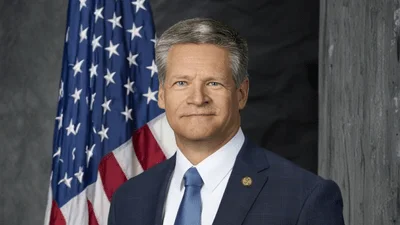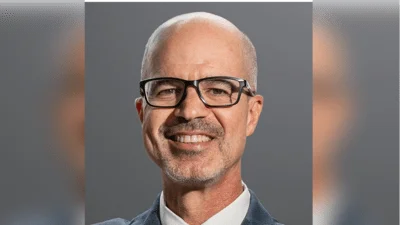The Congressional Record is a unique source of public documentation. It started in 1873, documenting nearly all the major and minor policies being discussed and debated.
“FAA MODERNIZATION ACT” mentioning the U.S. Dept. of Transportation was published in the Senate section on pages S3758-S3760 on May 6, 2008.
The publication is reproduced in full below:
FAA MODERNIZATION ACT
Mrs. MURRAY. Mr. President, the FAA Modernization Act, which we are debating in the Senate today, makes critical improvements that will ensure our aviation system is safe and efficient. That will put us on a path to modernizing our air traffic control system.
Now, in a short while, early this afternoon, the Senate will vote on whether we will finish this bill and send it to conference or whether Republicans are again going to refuse to work with us and force us to take this bill off the Senate floor.
I hope we are going to vote to move forward this afternoon. My colleagues on the Commerce and Finance Committees worked very hard on this important bill because it is critical to our Nation's economy that our aviation system work smoothly. We have some serious problems that we need to address.
Our air travel infrastructure is aging fast. It needs to be updated. The bill before us will help us modernize our aviation system to ensure that it continues to be the safest in the world.
We also have to take action to help carriers deal with rising fuel costs and, of course, to protect our passengers by reducing flight delays and cancellations.
Unfortunately, as we speak this morning, the Senate is essentially deadlocked. Republicans say they object to certain tax provisions, even though this bill, I remind everyone, was supported overwhelmingly when it was marked up in the Finance Committee. But our Republican colleagues insist that we strip out every provision that isn't directly linked to aviation. If that isn't done, they say they are going to filibuster this bill and keep us from ever getting to a final vote on it.
The majority leader has said time and again that he would welcome amendments to the bill, but Republicans have refused. Instead of working with us to come to an agreement on the points they oppose, they are going to block the whole bill.
What is most unfortunate about the Republican filibuster today is that this is a vitally important piece of legislation. Although my job as chairman of the Transportation Appropriations Subcommittee is to deal with appropriations, not authorizations, I can also tell you that this FAA bill is not just a bill that would be nice to have, it is a bill we must have.
Some of our most important aviation authorities expire at the end of this June. That means by the end of next month, if this bill is not enacted, the FAA will no longer have the authority to spend money out of the Airport and Airway Trust Fund.
Every penny that has been appropriated for purchasing and modernization at the FAA is paid for out of that fund. So if this bill doesn't become law at the end of next month, billions of dollars in projects at the FAA are going to grind to a halt.
If this bill doesn't become law, all of the employees who work on those projects will be told to stay home because the agency would not be able to pay them.
Mr. President, that is not all. Republican obstruction of this bill would cost billions of dollars in capital projects at our Nation's airports. The entire Airport Improvement Program, or AIP, would be shut down, and billions of dollars in critical safety improvements at airports across the country would go unspent.
Finally, our ability to collect ticket taxes from air travelers in order to fund our trust fund will run out. That would push the FAA's primary source of funding closer to bankruptcy.
Mr. President, these are not just small things. These programs ensure that airplanes and airports operate safely, and nobody can argue that safety would not be harmed if we shut down the ability of the FAA to modernize its long-outdated radar infrastructure.
I wish to talk about one of the nonaviation provisions that the Republicans say is a reason they are standing in the way of this important critical piece of legislation. I want to tell you why I believe it is critical to keep it in this legislation. The provision I am referring to addresses an urgent problem with the highway trust fund.
If we don't act now, the highway trust fund will go bankrupt sometime next year. If that happens, it will put a stop to Federal road projects across our entire country. That means bridge improvements, turn lanes, highway widenings, and countless projects would no longer get the Federal funding that has been promised. These are vital projects to all of our communities. They ensure that our highways are safe. They are essential to commerce and economic development.
It is critical to every State in our Nation and everybody who drives on our Federal highway system that we find a way to keep this trust fund solvent.
I have been sounding the alarm over this looming disaster for almost 2 years. We are at a point now where we have to find a fix to ensure that we don't have to make disastrous cuts in our highway spending next year.
Very early in this Congress, both Chairman Baucus and Ranking Member Grassley committed in writing to myself and my ranking member, Senator Bond, that they would make this fix that is now contained in this bill.
I ask unanimous consent that the letter to Senator Bond and myself be printed in the Record.
There being no objection, the material was ordered to be printed in the Record, as follows:
U.S. Senate,
Committee on Finance,
Washington, DC, January 25, 2007.Hon. Patty Murray,Chairman, Subcommittee on Transportation, Treasury, the
Judiciary, Housing and Urban Development, and Related
Agencies, Washington, DC.Hon. Christopher Bond,Ranking Member, Subcommittee on Transportation, Treasury, the
Judiciary, Housing and Urban Development, and Related
Agencies, Washington, DC.
Dear Senators Murray and Bond: Meeting the funding obligations laid out in SAFETEA-LU is of vital importance to our nation's transportation system. According to the recent CBO projections, the Highway Trust Fund shows a shortfall of several billion dollars in fiscal year 2009, the last year of SAFETEA-LU. The Senate Finance Committee is dedicated to finding the necessary revenues to keep the Highway Trust Fund whole for the life of the current authorization. We are actively working on several options to accomplish this task.
We appreciate this opportunity to share our commitment to meeting the nation's transportation needs.
Sincerely yours,Max Baucus,
Chairman.Charles E. Grassley,
Ranking Member.
Mrs. MURRAY. Mr. President, in the tax portion of the aviation bill, Chairman Baucus and Senator Grassley are keeping their word. This provision in this bill authorizes that there will be enough money to continue highway projects under SAFETEA-LU--the Federal transportation planning bill.
As I said, this addresses an urgent need. If the highway trust fund provision is stripped from this bill, my subcommittee could be required to cut highway spending for 2009 by $14 billion just to keep the trust fund out of bankruptcy next year. That will represent a cut of more than one-third in a single year.
I think all of our colleagues should know exactly what is being put at risk if the highway trust fund provisions were to be stripped out of this bill.
I ask unanimous consent that a table that has been prepared by the Federal Highway Administration be printed in the Record.
There being no objection, the material was ordered to be printed in the Record, as follows:
U.S. DEPARTMENT OF TRANSPORTATION--FEDERAL HIGHWAY ADMINISTRATION--COMPARISION OF DISTRIBUTION OF OBLIGATION
LIMITATION
[Scenario 1: Obligation Limitation Distribution for FY 2008 Based on Consolidated Appropriations Act, 2008.
Scenario 2: Obligation Limitation Distribution for FY 2009 Based on Obligation Limitation of $27.2 Billion]
----------------------------------------------------------------------------------------------------------------
Total obligation limitation
State -------------------------------------------------------
Scenario 1 Scenario 2 Difference
----------------------------------------------------------------------------------------------------------------
Alabama................................................. 652,726,547 454,824,733 (197,901,814)
Alaska.................................................. 282,066,711 213,461,360 (68,605,351)
Arizona................................................. 645,075,344 423,184,887 (221,890,457)
Arkansas................................................ 408,704,023 286,719,068 (121,984,955)
California.............................................. 3,027,693,941 2,162,914,748 (864,779,193)
Colorado................................................ 439,113,155 305,442,339 (133,670,816)
Connecticut............................................. 448,398,704 298,155,051 (150,243,653)
Delaware................................................ 128,377,882 89,408,810 (38,969,072)
Dist. of Col............................................ 131,278,091 89,055,744 (42,222,347)
Florida................................................. 1,646,926,789 1,102,615,868 (544,310,921)
Georgia................................................. 1,189,444,266 808,957,462 (380,486,804)
Hawaii.................................................. 138,186,609 92,455,082 (45,731,527)
Idaho................................................... 240,341,940 168,827,927 (71,514,013)
Illinois................................................ 1,116,883,893 783,330,484 (333,553,409)
Indiana................................................. 837,221,544 581,195,810 (256,025,734)
Iowa.................................................... 376,023,626 242,857,239 (133,166,387)
Kansas.................................................. 331,623,187 223,029,846 (108,593,341)
Kentucky................................................ 563,101,468 388,477,945 (174,623,523)
Louisiana............................................... 525,533,278 351,623,950 (173,909,328)
Maine................................................... 145,807,693 101,473,221 (44,334,472)
Maryland................................................ 526,801,824 351,819,107 (174,982,717)
Massachusetts........................................... 563,444,067 365,897,655 (197,546,412)
Michigan................................................ 949,589,055 722,171,474 (227,417,581)
Minnesota............................................... 516,029,374 391,306,319 (124,723,055)
Mississippi............................................. 386,729,693 267,581,968 (119,147,725)
Missouri................................................ 762,557,035 530,486,038 (232,070,997)
Montana................................................. 307,593,579 218,174,703 (89,418,876)
Nebraska................................................ 241,810,163 163,744,876 (78,065,287)
Nevada.................................................. 235,089,219 145,744,407 (89,344,812)
New Hampshire........................................... 148,716,449 100,205,953 (48,510,496)
New Jersey.............................................. 869,636,446 582,846,004 (286,790,442)
New Mexico.............................................. 302,478,979 217,029,410 (85,449,569)
New York................................................ 1,520,182,342 990,367,322 (529,815,020)
North Carolina.......................................... 926,525,517 651,798,430 (274,727,087)
North Dakota............................................ 202,565,774 139,213,152 (63,352,622)
Ohio.................................................... 1,166,229,708 840,803,111 (325,426,597)
Oklahoma................................................ 503,342,513 342,367,319 (160,975,194)
Oregon.................................................. 377,426,038 255,186,729 (122,239,309)
Pennsylvania............................................ 1,505,915,429 992,854,989 (513,060,440)
Rhode Island............................................ 169,131,952 109,296,597 (59,835,355)
South Carolina.......................................... 533,174,501 362,727,197 (170,447,304)
South Dakota............................................ 212,627,616 151,170,837 (61,456,779)
Tennessee............................................... 705,609,706 488,908,923 (216,700,783)
Texas................................................... 2,676,992,892 1,855,034,583 (821,958,309)
Utah.................................................... 234,081,641 160,420,055 (73,661,586)
Vermont................................................. 136,260,491 96,554,996 (39,705,495)
Virginia................................................ 856,744,956 600,370,965 (256,373,991)
Washington.............................................. 572,683,600 380,729,769 (191,953,831)
West Virginia........................................... 352,622,384 244,799,450 (107,822,934)
Wisconsin............................................... 625,583,865 444,299,449 (181,284,416)
Wyoming................................................. 210,639,995 153,148,013 (57,491,982)
-------------------------------------------------------
Subtotal............................................ 32,573,345,494 22,485,071,374 (10,088,274,120)
Allocated Programs...................................... 4,127,089,170 1,909,255,590 (2,217,833,580)
High Priority Projects.................................. 2,740,953,600 1,922,227,200 (818,726,400)
Projects of National & Regional Significance............ 410,949,000 230,558,400 (180,390,600)
National Corridor Infrastructure Improvement Program.... 449,988,000 252,460,800 (197,527,200)
Transportation Projects................................. 590,259,516 331,158,586 (259,100,930)
Bridge (Sec. 144(g)).................................... 92,400,000 64,800,000 (27,600,000)
Transfer to Sections 154 & 164.......................... 231,066,579 4,468,050 (226,598,529)
-------------------------------------------------------
Total............................................. 41,216,051,359 27,200,000,000 (14,016,051,359)
----------------------------------------------------------------------------------------------------------------
Mrs. MURRAY. The agency's table shows all of us the amount of money each and every State will see cut next year if the highway trust fund were not fixed and if we are required to fix it through the appropriations process for 2009. No State will be spared. Look up your own State. Texas will lose $822 million. Kentucky will lose $175 million. Minnesota will lose $125 million. Maine would lose $44 million. The list goes on. Look up your State and learn what is at risk if we don't vote to move this bill forward and solve this problem.
I remind my colleagues that the provisions in this bill do not fix the trust fund on the long-term basis. The fix that is in this bill will only be sufficient to keep the highway trust fund in the black through 2009. But cutting this provision would not just mean States would lose the ability to make urgent road improvements, it would also mean a loss of a half million jobs across our Nation.
Many of my colleagues have talked about the terrible impact felt in the construction sector by the recent economic slowdown. Some have called for economic stimulus proposals to get the sector back on its feet.
I have to say, stripping the highway trust provision out of this bill will have the exact opposite effect. It will mean layoffs at a time when our economy badly needs help. So I hope our colleagues take that into consideration when we vote this afternoon on whether to move forward on this bill.
In addition, I hope my colleagues remember that earlier this year we learned some disturbing news about the FAA's handling of safety inspections at Southwest Airlines. We learned that the FAA had not reviewed Southwest's system for complying with certain agency safety directives since 1999. That revelation caused a great deal of concern about the FAA's safety inspections across the country, with very good reason. Those inspections are important because they help our airlines and the FAA discover potential problems and address them before there is a tragedy.
But when Congress began looking into the problem, we found it was much more extensive. Last month, at a hearing with the Acting FAA Administrator, Robert Sturgell, and the Department of Transportation inspector general, I learned for well over 5 years the FAA had not examined whether Southwest was using the right safety systems for certain maintenance requirements.
Now, you can imagine I was concerned to hear about that. So I asked him how many other airlines had missed safety inspections. Mr. Sturgell could not answer me. Well, I asked him to get it back to me. I finally received an answer. The FAA now tells us it has failed to perform dozens of mandatory inspections at seven other major air carriers.
In fact, the FAA now says it has missed more than 100 of these required safety inspections at major airlines. Mr. Sturgell said that part of the reason might be ``inadequate resources.'' Well, I am not sure how that could be. I have been working, along with my colleagues, to increase funding for FAA inspections for the last 7 years--in fact and this is true of my appropriations subcommittee, whether I have been chairman or my Republican colleagues have been chairman, for the last 4 years. We have provided more funding for more safety inspectors than the FAA has ever requested of us. So this is a funding issue? The FAA hasn't been honest about the true needs of its agency.
Now, I know Congress has been doing its part to build the inspection workforce without the benefit of a request from the FAA, and as a result, we have hundreds more inspectors across the country than the FAA has ever requested. Either way, I have serious concerns because the agency has insisted that the airlines must be the ones to guarantee the safety of their operations, and it is said that FAA inspectors are best used to ensure that the airlines have assistance to do the job. Now we are being told that the FAA is years behind in inspecting those very systems.
The lesson from the Southwest debacle is that these safety inspections matter. They are one of the best indicators of whether an airline has its act together when it comes to maintenance and safety compliance. Clearly, the FAA needs to bring more focus and leadership to meeting its own self-imposed deadlines, and we will be looking for quarterly reports and answers on this as we move forward.
So with all of these safety concerns as a backdrop, this afternoon we are now facing a filibuster from our Republican colleagues who want to bring down the FAA safety authorization bill. We have a bill before us that clearly offers us a chance to make a difference for safety, for our airlines, for our passengers, for our highways, and for our economy. We are talking about a bill that ensures the safety of our air travel. This is a critically important bill and, by the way, until recently a bipartisan one. But now we are hearing that the Republicans want to wage their 68th filibuster on a bill that is important to all of us.
We have the ability to move forward. I urge our Republican colleagues to work with us and to not obstruct this bill this afternoon because anyone who has stood in an endless line at an airport or had their flight canceled or wanted to have important highway improvements done is counting on us to do the job. So I urge my colleagues to negotiate instead of blocking progress, and I hope they will work with us to do this quickly as we move to the bill today.
Mr. President, I thank you, and I yield the floor.
The ACTING PRESIDENT pro tempore. The Senator from Maryland is recognized.
Mr. CARDIN. Mr. President, first I wish to thank Senator Murray for her comments. I couldn't agree with her more. I know the people of Maryland are very much concerned about the FAA reauthorization bill and getting it done. Passenger safety is critically important to the people of Maryland and this Nation. Modernizing our air system is very important. I thank Senator Murray for the comments she made.
____________________








